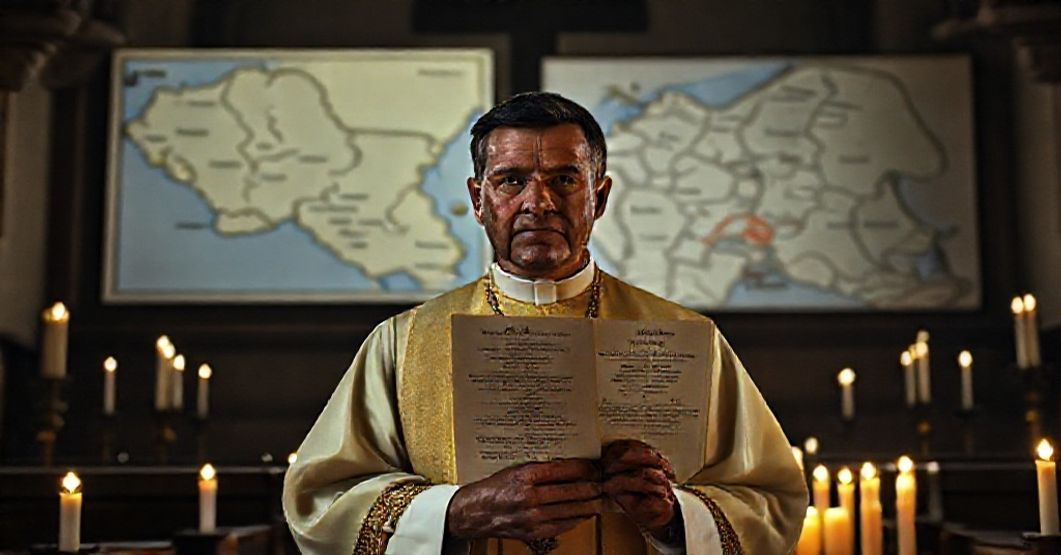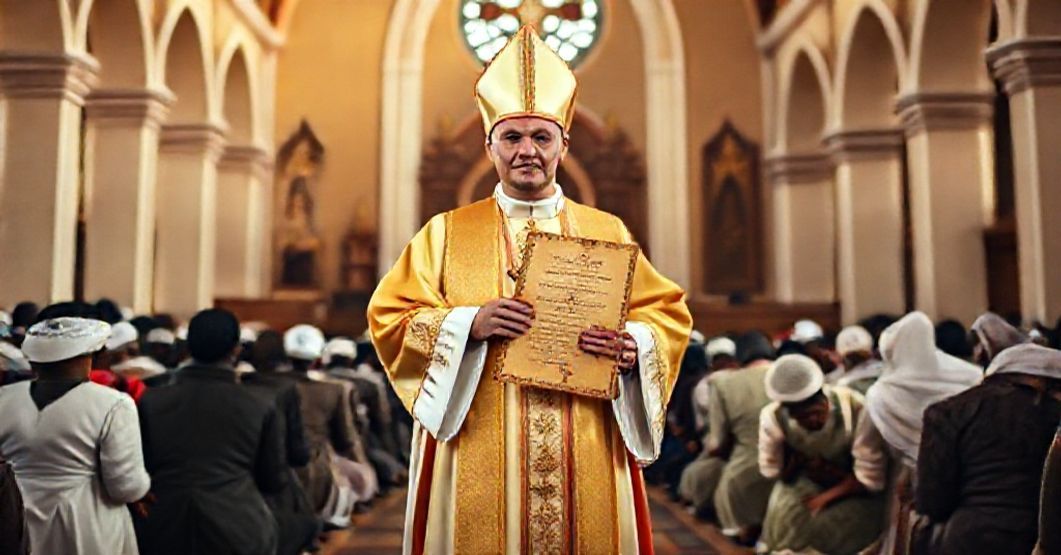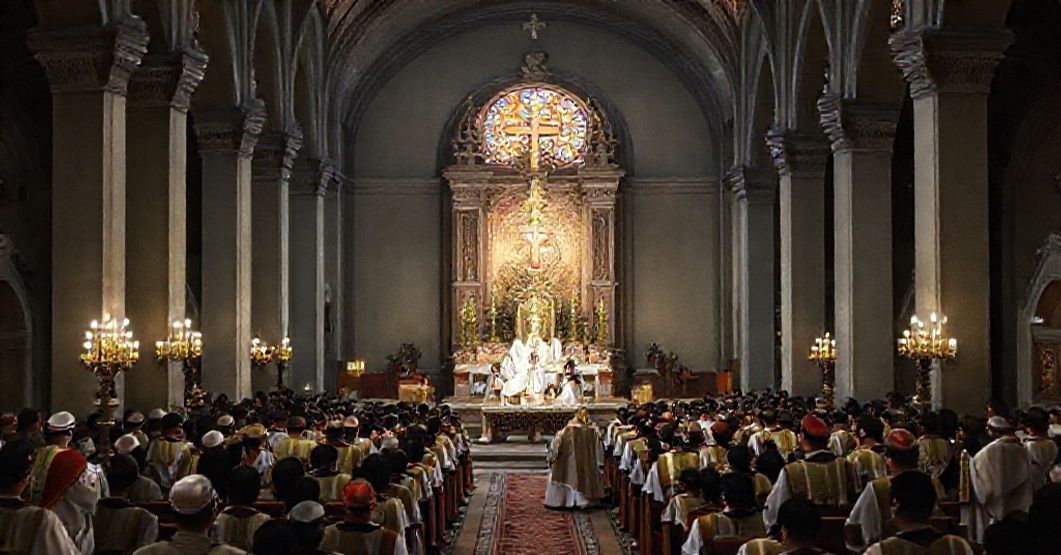Antipopes of the Antichurch



















Timeline of this heretical pontiff
Encyclical Letters
+ 15 posts1959
+ 7 posts1961
+ 4 posts1962
+ 2 posts1963
+ 2 postsApostolic Exhortations
+ 3 postsApostolic Constitutions
+ 93 posts1958
+ 6 posts1959
+ 87 postsMotu Proprio
+ 15 posts1958
+ 1 posts1959
+ 1 posts1962
+ 11 postsApostolic Letters
+ 151 posts1958
+ 4 posts1959
+ 63 posts1960
+ 78 posts1961
+ 1 posts1962
+ 4 posts1963
+ 1 postsSpeeches
+ 99 posts1958
+ 2 posts1959
+ 26 posts1960
+ 29 posts1961
+ 16 posts1962
+ 24 postsMessages
+ 6 posts1959
+ 4 postsHomilies
+ 4 postsLetters
+ 152 posts1958
+ 1 posts1959
+ 48 posts1960
+ 32 posts1961
+ 31 posts1962
+ 30 posts1963
+ 10 postsNot categorized
+ 1 posts1958
+ 1 postsNews feed


Luluaburgensis (1959.04.25)
The presented Latin text is the act by which John XXIII, at the very beginning of his usurped reign, decrees the territorial division of the Apostolic Vicariate of Luluaburg in the Belgian Congo and erects a new Apostolic Vicariate of Luebo, entrusted explicitly to an emerging indigenous clergy, with carefully delimited borders and full ordinary jurisdiction as a missionary circumscription; in a word, it is a geopolitical and bureaucratic redrawing of ecclesiastical lines under the appearance of missionary zeal. The entire document, although draped in pious phrases about the indefectible Kingdom of Christ, functions as an early programmatic signal of the coming conciliar revolution: the substitution of supernatural mission with administrative engineering, the instrumentalization of native clergy formation, and the quiet mutation of the Church’s visible structure under a man who had no authority to legislate in the Church of Christ.


Qui cotidie moerore (1959.05.04)
The document “Qui cotidie moerore,” issued by antipope John XXIII on 4 May 1959, outwardly establishes a new ecclesiastical province in Japan: Nagasaki is raised to a metropolitan archdiocese, and the dioceses of Fukuoka and Kagoshima are separated from Tokyo and made its suffragans. The text is framed as pastoral solicitude for the growth of the Church in Japan, praising its expansion and assigning juridical prerogatives to the new metropolitan see and its first incumbent, Paul Aijro Yamaguchi. However, behind this apparently technical administrative act stands the same poisoned principle that will soon explode at Vatican II: the transformation of ecclesiastical structures into instruments of a humanistic, horizontal, politically adaptable religion detached from the exclusive, public reign of Christ the King and from the militant, anti-modernist spirit defined by the pre-1958 Magisterium.


Ambatondrazakaensis (1959.05.21)
The presented constitution, attributed to A A A IOANNES PP. XXIII and dated 21 May 1959, announces the erection of the so‑called Diocese of Ambatondrazaka in Madagascar. It detaches specified territories from the sees of Diégo-Suarez and Tananarive, assigns the new circumscription as suffragan to Tananarive, entrusts it to the Trinitarian Order, regulates the location of the episcopal see, the designation of the cathedral (Sacred Heart of Jesus in Ambatondrazaka), seminary and chapter provisions, financial endowment, canonical administration, and delegates Archbishop Marcel Lefebvre, then Apostolic Delegate in French Africa, to implement the decree. It is framed in pious imagery of the Church as a great tree spreading its branches over all nations, and claims supreme, binding authority for this administrative act.


VERAE CRUCIS — TEHUANTEPECENSIS (1959.05.23)
The Latin text promulgated by John XXIII under the title “Verae Crucis — Tehuantepecensis (S. Andreae de Tuxtla)” announces the territorial dismemberment of the Archdiocese of Veracruz and the Diocese of Tehuantepec in Mexico and the erection of a new ecclesiastical circumscription: the Diocese of San Andrés Tuxtla, with defined municipal boundaries, its own cathedral, chapter to be erected, seminary, financial provisions, and subjection as suffragan to the metropolitan see of Veracruz; execution is entrusted to Apostolic Delegate Luigi Raimondi, with all usual juridical clauses of validity, derogation, and penalties. In a single sentence: this constitution is the bureaucratic self-assertion of a usurping structure already in departure from integral Catholic ecclesiology, dressing its growing apostasy in the forms of canonical normality.
Varia
Announcement:
– News feed –implemented
– Antipopes separate web sites with their all documents refutation – in progress
